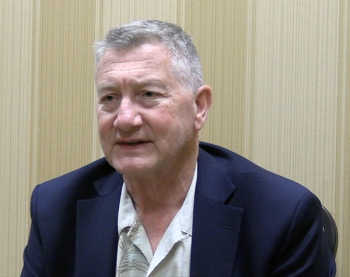
Best of the Week: Analyzing Mummy Hair, A Conversation with PerkinElmer
Here are the top five articles that the editors of Spectroscopy published this week.
This week, Spectroscopy published a variety of articles on the hottest topics in analytical science. Below, we’ve highlighted some of the most popular articles, according to our readers. Happy reading!
Will Wetzel
Dating back thousands of years, Andean mummies can offer valuable insights into the beliefs, rituals, and daily lives of pre-Colombian civilizations inhabiting the Andean region of South America, such as the Inca, Moche, and Chachapoya. These mummies are often found well-preserved in places like caves and tombs, in addition to being decorated with elaborate offerings, tools, and textiles. This highlights the importance the afterlife held in these civilizations, while also offering insight into these peoples’ lives and legacies. In this interview, Dulasiri Amarasiriwardena, emeritus professor of chemistry at Hampshire College, Amherst, Massachusetts, discusses his team’s research into Andean mummy remains. One example of this includes their use of laser ablation-inductively coupled plasma-mass spectrometry (LA-ICP-MS) to investigate trace metal nutrition and exposure to toxic metal(loid) pollutants and their effects on Andean mummy remains. Furthermore, Amarasiriwardena discusses his team’s findings and what they can tell us about ancient Andean culture.
Caroline Hroncich
PerkinElmer is at the forefront of the analytical instrumentation market, with more than 6000 employees, 500000 laboratory assets worldwide, and distribution centers in the United States, Europe, and Asia. With the analytical science instrumentation market being expected to grow to $66.27 billion by 2028 (up from $49.47 billion in 2024), instrument manufacturers are being pressured to develop new and more advanced analytical instruments at faster rates. Additionally, said machines must also be compatible with new technological advances, like artificial intelligence (AI) and machine learning (ML) solutions. In a recent interview with Spectroscopy, John Luck, chief commercial officer of PerkinElmer, and Dirk Bontridder, chief executive officer of PerkinElmer, spoke with us at Pittcon 2024 in San Diego, California, discussing the latest market trends in analytical science and how PerkinElmer is thinking about the industry’s future.
Aaron Acevedo
Flavonoids, which are found in various plants and fruits, have become targets for use in drugs and food supplements, partly due to their antioxidant and anti-inflammatory properties. Kaempferol (KMP), one of the most common flavonoids, has been studied intensely for its beneficial effects in fighting diseases like cancer and COVID-19. In a recent study out of the Autonomous University of Puebla (BUAP) in Puebla, Mexico, scientists studied how excited-state proton transfer based fluorescence works with Kaempferol powder and different solutions. This was done by studying the fluorescence (FL) emission of KMP powder and its solutions using polar and non-polar solvents.
Aaron Acevedo
Ceraminde NP (Cer-NP) is a type of ceramide found in the skin that helps keep skin hydrated and healthy. Low skin permability hinders ceramides’ efficacy, which can prove dangerous, seeing how the skin barrier is vital for protection from external threats like chemicals and allergens, in addition to helping maintain homeostasis, among other tasks. To study the skin penetration of Cer-NP nanoemulsions (NEs) into inner forearm skin, scientists from the Beijing Technology and Business University in Beijing, China assessed the effects of said NEs on skin cells using confocal Raman spectroscopy (CRM).
Spectroscopy Staff
Biomedical applications use technology in conjunction with live biological samples, and they are often used in environmental, pharmaceutical, and materials science applications. Researchers are hoping to use this technique to improve on existing technologies; for example, a team of researchers from the Southern University of Science and Technology in Shenzhen, China, recently looked at how to improve Raman spectroscopy analysis in biomedical applications. Raman spectroscopy is known for its molecular fingerprinting capabilities across different scientific domains, but it is difficult to attribute vibration peaks amongst environmental, instrumental, and specimen noise in the process. To address this, lead researcher Gina Jinna Chen and her team created a novel a novel Raman spectral preprocessing scheme based on self-supervised learning (RSPSSL). Their findings were published in the journal Light: Science and Applications.
Newsletter
Get essential updates on the latest spectroscopy technologies, regulatory standards, and best practices—subscribe today to Spectroscopy.




